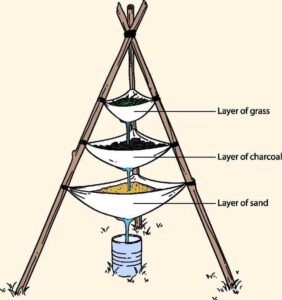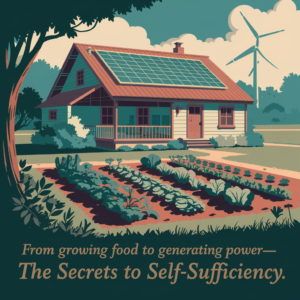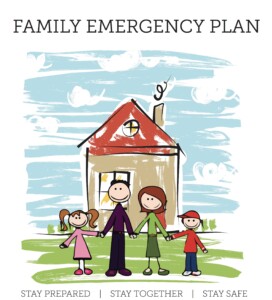
The Knife That Got Me Through My First Real Survival Trip
The first time I set out on a multi-day bushcraft trip, I thought I had everything I needed. Decent pack. Paracord. Some freeze-dried meals. And a cheap knife I picked up from a big-box store because, hey—it “looked tactical.”
That knife barely made it past day one. The blade chipped while I was splitting kindling. The handle started to wobble when I tried to carve down some saplings. And by the time I was setting up camp for the night, I knew I had made a rookie mistake: I underestimated how critical a good bushcraft knife really is.
Since then, I’ve tested dozens of knives in real-world conditions—rain, snow, mud, and miles away from backup. And the difference between a reliable blade and a flashy gimmick? It could be the difference between comfort and catastrophe.
In this article, I’m going to break down what makes a good bushcraft knife, what I actually carry, and the ones I’d recommend if you want something that works—not just something that looks cool on a shelf. Whether you’re going into the backcountry, building a bug-out bag, or just want to learn the ropes, these bushcraft knives have earned their spot through real use.
If you’re still building out your survival setup, I’d also suggest checking out my ultimate survival kit guide. Your knife should be one of the first things you get right.

What Makes a Knife a Bushcraft Knife?
Not every knife belongs in the woods. A bushcraft knife isn’t just any blade—it’s your all-purpose survival tool. It has to carve, slice, split, notch, clean game, prep kindling, and still have your back when things get rough. You can’t fake it with these.
Here’s what I look for in a true bushcraft knife:
1. Full tang construction
If the blade and handle aren’t one solid piece of steel, I don’t trust it. You want strength all the way through—no rattling, no snapping.
2. High carbon or tool steel
Stainless steel resists rust, but carbon steel holds a sharper edge and can be used with a ferro rod to start fires. DC53, 1095, and other high-performance steels are my go-to.
3. Comfortable, grippy handle
Whether it’s micarta, wood, or rubberized, the handle should feel secure in your hand—even when wet or muddy.
4. A practical blade length
In my experience, 4 to 6 inches is the sweet spot. Long enough to baton wood, short enough for fine carving and food prep.
5. A good sheath
I’ve had great knives with terrible sheaths—and they become a pain. You want something that rides well on your belt and won’t fall apart after a few hikes.
A bushcraft knife is something you end up relying on more than almost anything else. It’s not just gear—it’s your lifeline. And next, I’ll show you the first one I started trusting after my big box knife failed me.

The BPS Adventurer: Rugged, Reliable, and Affordable
After my first survival trip humbled me, I went on the hunt for a knife that wasn’t overpriced but could actually take a beating. That’s when I came across the BPS Knives Adventurer—and I’ve got to say, this thing overdelivers for the price.
It’s got a full tang carbon steel blade, and the edge holds up surprisingly well through camp chores like baton work, feather sticks, and even food prep. I’ve used mine to process firewood in wet weather, scrape tinder, and slice meat—and it hasn’t let me down once.
What I like about it most:
- Carbon steel blade that sparks well with a ferro rod
- Comes with a real leather sheath and firestarter included
- Classic bushcraft design—nothing fancy, just tough and functional
- Easy to sharpen in the field
For under $50, it’s one of the best bushcraft knives for sale I’ve ever come across. It’s not a display piece—it’s the kind of blade you don’t mind beating up because you know it can take it.
If you’re just getting started or want a reliable backup, the BPS Adventurer is a no-brainer. I keep one in my truck kit and another in my weekend camping bag just because it’s that dependable.

DC53 Steel Knife: Built for Serious Outdoor Work
Now, if the BPS is my workhorse, the DC53 Full Tang Survival Knife is the powerhouse. This thing is chunky, thick, and absolutely built to handle abuse.
With a 6mm thick DC53 steel blade and a total length of 15.2 inches, it’s more of a survival tool than just a knife. I’ve chopped branches with it, split logs, and even used the spine to drive tent stakes. The balance feels great in the hand, and the steel takes a razor-sharp edge.
Here’s why it stands out:
- DC53 tool steel is incredibly strong and tough to chip
- The cerium firestarter included throws massive sparks
- Great weight and control for heavy-duty bushcraft tasks
- Solid sheath that doesn’t feel like an afterthought
If you’re looking for something between a knife and a hatchet, this beast fills that role. It’s especially good for cold-weather trips where I need to process a lot of firewood or get a fire going fast in tough conditions.
It’s easily one of the top bushcraft knives I’ve carried when I knew things might get serious out there.

Mossy Oak Tactical Bowie: A Budget Beast That Gets It Done
Some folks turn their noses up at big-box brands, but let me tell you—this Mossy Oak Tactical Bowie earned my respect in the field. It’s a 15-inch fixed-blade survival knife that’s perfect for beginners, weekend warriors, or anyone wanting serious size without a serious price tag.
I took this knife on a three-day solo campout just to test it against my higher-end blades. Guess what? It handled batoning, fire prep, and even food slicing like a champ. It’s big, yes—but balanced surprisingly well for a blade this size.
Here’s what makes it worth having:
- Sharp straight out of the box—no touch-up needed
- Built-in firestarter and sharpener make it ideal for car kits or grab-and-go bags
- Comfortable grip even with gloves or wet hands
- A great blade for chopping, splitting, or even defense if it came down to it
If you’re looking at Amazon bushcraft knives and want something affordable but reliable, this one’s a solid win. I don’t mind tossing it in my pack, leaving one in the truck, or loaning it to a buddy—it’s rugged enough to trust, and cheap enough not to cry over if it gets scratched.
How to Choose the Right Knife for Your Style
There’s no one-size-fits-all when it comes to bushcraft knives. What works for me on a deep woods solo hike isn’t necessarily the knife I keep in my glovebox for roadside emergencies. Over the years, I’ve learned that the best bushcraft knife is the one that fits your real-world use.
Here’s my go-to checklist before buying any knife:
1. What’s your primary use?
Are you carving spoons, starting fires, processing firewood, or skinning game? If you’re doing a little of everything, you want a strong all-arounder like the BPS or DC53.
2. How do you carry it?
Belt knife? Pack knife? Backup neck knife? Make sure the sheath works for how you move. I once had a great knife with a sheath that poked into my hip for 6 miles… never again.
3. What blade length feels right?
For most tasks, I stick to 4–6 inches. Anything longer than that starts to cross into bowie territory (like the Mossy Oak), which is awesome—but not always necessary.
4. Do you want spark?
If you plan to strike a ferro rod, carbon steel is king. I always match my knife to my fire-starting plan.
5. How much maintenance are you okay with?
Carbon steel needs more oiling and care. Stainless is easier for beginners, but doesn’t throw sparks the same way.
Once you figure out what kind of survivalist you are—weekend camper, hardcore prepper, or somewhere in between—you’ll start to feel which knives fit best. It’s not about hype—it’s about how it feels in your hand and what you ask it to do.

Are Handmade or Custom Bushcraft Knives Worth It?
Let me shoot you straight—handmade and custom bushcraft knives can be incredible… but only if you’re buying for the right reasons. I’ve used everything from $20 beaters to $300 custom blades forged by hand, and here’s the honest truth: a knife doesn’t have to be expensive to save your life.
That said, I’ve got a deep appreciation for a well-made, hand-forged blade. The craftsmanship, the materials, the attention to detail—it’s art you can put to work.
Here’s when a custom or handmade knife makes sense:
- You want a lifetime blade – A good custom knife will outlast you with proper care.
- You care about balance and ergonomics – Custom grips and weight distribution feel next-level.
- You’re supporting a local bladesmith or small business – Always a win in my book.
- You want something no one else has – There’s pride in carrying a blade that’s truly yours.
But be careful—price doesn’t always equal performance. I’ve seen “custom” knives that were just mass-produced with fancy handles and a $200 markup. Meanwhile, a well-reviewed Amazon blade like the BPS Adventurer will outperform it in the field.
So are they worth it? Yeah—if you’re someone who actually uses them. If you just want something pretty for Instagram, you’re probably missing the point. A bushcraft knife is meant to be used, scratched, oiled, sharpened, and passed down—not locked away in a glass case.

Why Every Kit Should Have a Backup Knife
This is one lesson I learned early—and I learned it hard. I was three miles from camp, trimming small branches for a shelter wall, and snap—blade tip gone. My only knife, my only plan. That won’t happen again.
Now, I always carry a backup knife. It doesn’t need to be fancy. It just needs to be sharp, solid, and ready.
Here’s how I work backups into my setup:
- Main blade on my belt – Usually my best bushcraft knife (currently DC53 or BPS).
- Smaller backup in my pack or pocket – Even a decent folding knife or multi-tool works.
- Cooking knife kept separate – I carry a lightweight blade just for food prep (yes, there are even great bushcraft cooking knives designed for this).
- One knife in the vehicle kit – Always. Period.
The point is, redundancy is key in survival. If your one knife fails and you’ve got nothing else, you’re carving stakes with a rock. Keep a backup—and make sure it’s something you’ve actually tested, not just something that “looks cool” in the pack.
When it comes to bushcraft knives, I believe in trusting your gear—but backing it up anyway.

Choose the Knife That Feels Like an Extension of You
Out in the wild, your knife becomes more than a tool—it’s part of how you move, how you survive, and how you adapt when things go sideways. I’ve carried knives that felt clunky, awkward, or just didn’t hold up. And I’ve carried others that felt like they were made for my hand—like they were waiting for that one moment when everything else failed and they had to do the job.
That’s what you want from a bushcraft knife.
Whether you’re grabbing your first blade or adding a new one to your rotation, think beyond brand names and price tags. Focus on real usability, comfort, edge retention, and how it fits into your actual survival plan—not someone else’s YouTube loadout.
Here’s a quick recap of the bushcraft knives I’ve personally used, abused, and trust:
- BPS Adventurer – Affordable, dependable, and sparks like a champ
- DC53 Steel Knife – A beast of a blade for serious firewood and fieldwork
- Mossy Oak Tactical Bowie – Big, bold, and surprisingly capable for the price
Don’t forget to think about backups, cooking knives, and even multi-tools depending on your setup. A good knife will serve you well—but the right knife for you will give you confidence every time you hit the trail or hunker down in an emergency.
And if you’re still building your system, make sure to check out my complete guide to survival kit essentials—because your knife is just the beginning.

What’s the Difference Between a Bushcraft Knife and a Survival Knife?
I get asked this a lot—and honestly, there’s a ton of overlap. But here’s how I break it down:
- A bushcraft knife is all about precision and control. You’re carving, feathering, making traps, shaping tools, and doing fine tasks in the woods.
- A survival knife leans more toward brute strength. Think batoning wood, prying open doors, or smashing windows in an emergency.
That’s why I carry both. My DC53 Steel Knife works great for survival-style abuse, but my BPS Adventurer is my go-to for clean bushcraft work like fire prep or crafting shelter stakes.

Is a Full Tang Blade Really That Important?
Yes. No debate. If you’re serious about the outdoors, a full tang blade is non-negotiable. That means the blade steel runs through the entire handle—making it stronger, more durable, and way less likely to snap under pressure.
I’ve broken partial tang knives before. Never again. Every knife I’ve listed in this article—including the Mossy Oak Tactical Bowie—is full tang for a reason. It’s a small detail that makes a big difference when it counts.

Can You Use a Bushcraft Knife for Hunting or Food Prep?
Absolutely. I’ve used my bushcraft knives to skin game, clean fish, slice meat, and prep campfire meals more times than I can count. Just make sure to clean your blade properly afterward—especially if you’re working with high-carbon steel like the BPS or DC53, which can rust if neglected.
You can also carry a smaller bushcraft cooking knife or folding blade if you prefer to keep your main knife focused on woodcraft and fire work.

Do You Need to Carry a Firestarter with Your Bushcraft Knife?
I always do—and most of my favorite knives come with one. The DC53 Steel Knife and Mossy Oak both include a ferro rod, which makes starting a fire quick even in wet conditions.
If your knife has a good 90-degree spine and the blade steel is carbon-based, you can use it with almost any firestarter—even cotton balls soaked in petroleum jelly or fatwood shavings from the field.
As an Amazon Associate we earn from qualifying purchases through some links in our articles.



